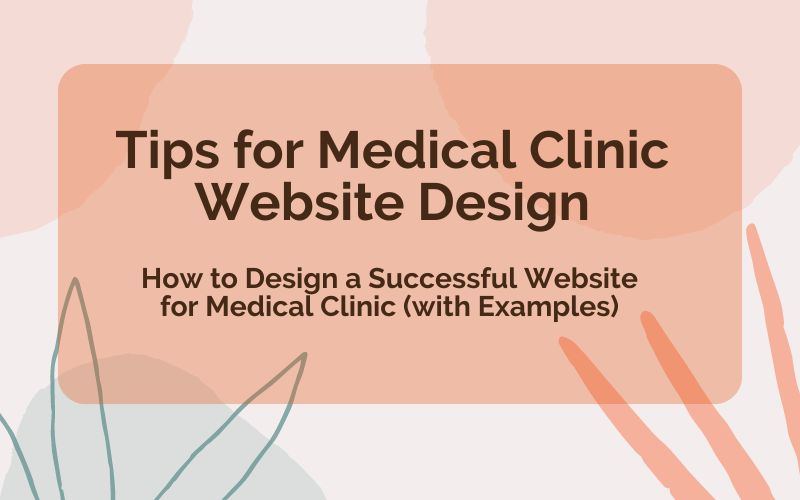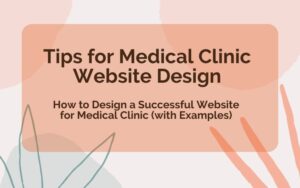A well-designed, user-friendly medical clinic website can make a lasting impression, build trust, and ultimately drive more patient engagement.
At the same time, a confusing or outdated website can quickly turn away potential patients, damaging your online reputation and limiting your reach.
As a healthcare professional, it’s crucial to understand the key elements that contribute to an effective medical clinic website design. From optimizing for mobile responsiveness to incorporating engaging content and clear calls-to-action, every aspect of your website should be carefully crafted to deliver a seamless user experience and position your practice as a trusted, reliable healthcare provider.
In this comprehensive guide, we’ll explore proven tips and real-world examples to help you design a successful, patient-friendly website for your medical clinic. Whether you’re looking to revamp an existing site or build a new one from scratch, this article will provide you with the insights and strategies you need to create a digital presence that truly sets your practice apart.
Prioritize Mobile-Friendliness
Ensuring your medical clinic’s website is optimized for small screens is no longer an option – it’s a necessity. With over 60% of web traffic (Source: Priori Data) now comes from smartphones, a responsive, mobile-friendly design is crucial for providing a seamless user experience and meeting the expectations of visitors to your website
To ensure your website is truly mobile-friendly, focus on the following key elements:
Responsive Layout
Implement a responsive web design that automatically adapts the layout and content to fit various screen sizes, from desktops to smartphones. This means your website’s text, images, and navigation should resize and rearrange fluidly, without any distortion or loss of functionality.
Streamlined Navigation
On mobile devices, navigation should be intuitive and easy to use. Minimize the number of taps required to access key information, such as appointment scheduling, provider bios, and contact details. Consider implementing a “hamburger” menu icon that opens up a clean, mobile-optimized navigation menu.
Optimized Content
Ensure your website’s content is easy to read and digest on smaller screens. Use concise, scannable language, break up text with subheadings, and optimize images and videos for mobile viewing. Avoid cramming too much information onto a single page, as this can lead to a cluttered, overwhelming experience.
Simplify Forms
When it comes to online forms, such as new patient registration or appointment requests, minimize the number of fields and make use of mobile-friendly input types (e.g., checkboxes, dropdowns) to streamline the user experience. Implement form validation to prevent errors and reduce frustration.
By prioritizing mobile responsiveness in your medical clinic’s web design, you’ll not only improve the user experience for your tech-savvy patients but also boost your website’s search engine visibility, as Google heavily favors mobile-friendly sites in its ranking algorithms.
Optimize for Local SEO
Local search engine optimization (SEO) is crucial for attracting potential patients in your geographic area. When someone searches for a “medical clinic near me” or a specific service in their city, you want your practice’s website to appear at the top of the search results.
To optimize your medical clinic’s website for local SEO, consider the following strategies:
Accurate NAP Citations
Ensure your business’s name, address, and phone number (NAP) are consistently displayed across your website, online directories, and other relevant listings. This helps search engines accurately identify and associate your practice with its physical location.
Localized Content
Incorporate location-specific keywords and phrases throughout your website’s content, such as the name of your city, neighborhood, or region. This could include blog posts, service descriptions, and even the homepage. Use these terms naturally, without keyword stuffing.
Schema Markup
Implement structured data (schema) markup on your website to provide search engines with additional context about your medical practice, such as your address, contact information, and services offered. This can help your website stand out in search results with rich snippets and knowledge panels.
Google My Business Listing
Claim and optimize your Google My Business (GMB) listing, which allows you to manage how your medical practice appears on Google Search and Google Maps. Ensure all details, including your address, phone number, hours of operation, and photos, are up-to-date and accurate.
Patient Reviews
Encourage your satisfied patients to leave reviews on your GMB listing, as well as other popular platforms like Yelp and Facebook. Positive reviews can significantly boost your local search visibility and credibility.
By focusing on these local SEO best practices, you can improve your medical clinic’s online discoverability and ensure potential patients in your community can easily find and connect with your practice.
Create Informative, Engaging Content
Your medical clinic’s website should do more than just provide basic information about your services and providers – it should serve as a valuable resource for your patients, demonstrating your expertise and building trust in your brand.
To achieve this, focus on creating informative, engaging content that addresses the needs and concerns of your target audience. Consider incorporating the following elements:
About Us and Provider Bios
Dedicate a prominent section of your website to introducing your medical practice, its mission, and the healthcare professionals who make up your team. Include detailed bios that highlight each provider’s education, certifications, areas of expertise, and personal interests.
Condition-Specific Information
Provide comprehensive, easy-to-understand information about the various medical conditions, treatments, and procedures your clinic specializes in. This helps educate your patients and shows your practice’s depth of knowledge.
Educational Blog Content
Regularly publish blog posts that cover timely, relevant healthcare topics, such as seasonal wellness tips, new medical research, or common symptoms and treatments. This not only boosts your website’s search engine visibility but also positions your practice as a trusted source of information.
Multimedia Elements
Supplement your written content with visually engaging elements, such as high-quality images, informative infographics, and educational videos. These multimedia assets can help break up text-heavy pages and make complex medical information more digestible for your patients.
Patient Testimonials
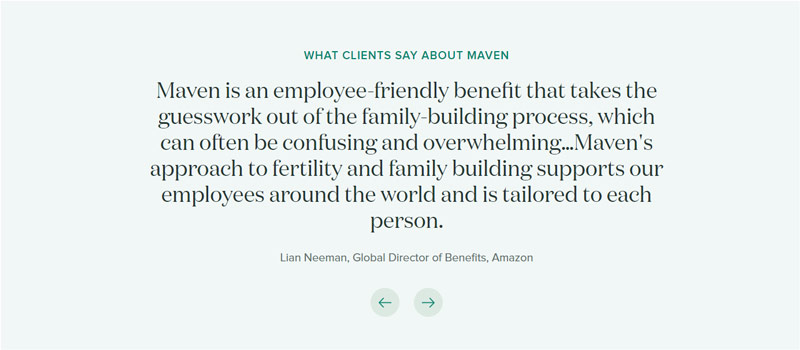
Showcase positive patient experiences through written testimonials, video interviews, or case studies. These authentic stories can help build trust and credibility, reassuring potential patients about the quality of care they can expect from your practice.
By investing in the creation of informative, engaging content, you’ll not only improve the user experience on your medical clinic’s website but also demonstrate your practice’s expertise, compassion, and commitment to patient-centric care.
Optimize the User Experience
Designing a successful medical clinic website is not just about aesthetics – it’s also about ensuring a seamless, intuitive user experience that meets the needs and expectations of your patients. By focusing on the following user experience (UX) elements, you can create a digital environment that keeps visitors engaged and encourages them to take action.
Intuitive Navigation

Organize your website’s content and navigation in a clear, logical manner that allows visitors to quickly find the information they need. Use a well-structured main menu, with dropdown or expandable submenus as necessary, to guide users through your site.
Prominent Calls-to-Action

Make it easy for visitors to take the next step, whether that’s scheduling an appointment, downloading new patient forms, or contacting your practice. Place prominent, visually striking calls-to-action (CTAs) throughout your website, using contrasting colors and clear, compelling copy.
Streamlined Forms
When it comes to online forms, such as appointment requests or patient registration, focus on minimizing the number of required fields and making the process as user-friendly as possible. Implement form validations to catch and correct errors, and consider breaking complex forms into multiple steps to improve completion rates.
Accessibility Considerations
Ensure your medical clinic’s website is accessible to visitors with disabilities, following Web Content Accessibility Guidelines (WCAG) best practices. This includes providing alt text for images, ensuring proper color contrast, and enabling keyboard navigation.
Consistent Branding
Maintain a cohesive, branded look and feel across your entire website, from the color scheme and typography to the imagery and tone of voice. This helps reinforce your practice’s identity and creates a sense of familiarity and trust for your patients.
By prioritizing user experience in your medical clinic’s web design, you’ll create a digital environment that is not only visually appealing but also highly functional, intuitive, and tailored to the needs of your patient base.
Showcase Credibility and Trust
In the healthcare industry, building trust and credibility with your patients is critical. Your medical clinic’s website should serve as a digital representation of your practice’s professionalism, expertise, and commitment to patient-centered care.
To achieve this, consider incorporating the following trust-building elements:
Professional Certifications and Accreditations
Prominently display any relevant professional certifications, awards, or accreditations your practice has earned, such as AAAHC or PCMH recognition. These badges and seals help reinforce your medical clinic’s commitment to quality and adherence to industry standards.
Provider Profiles and Credentials
Invest in detailed provider profiles that highlight each of your healthcare professionals’ education, licenses, certifications, and areas of specialization. This information helps assure patients that they are in capable hands.
Patient Testimonials and Reviews
Showcase positive patient experiences through written testimonials, video interviews, or online reviews from platforms like Google, Facebook, and Yelp. These authentic endorsements can go a long way in building trust and credibility.
Security and Privacy Badges

Display trust seals and badges that indicate your website’s adherence to HIPAA compliance and other data privacy standards. This helps reassure patients that their sensitive information will be handled securely.
Transparent Pricing and Policies
Provide clear, upfront information about your medical clinic’s pricing, payment options, and policies, such as appointment cancellation and rescheduling procedures. Transparency in these areas can help set realistic expectations and foster trust.
By incorporating these trust-building elements throughout your medical clinic’s website, you’ll demonstrate your practice’s professionalism, expertise, and commitment to patient-centric care – ultimately helping to attract and retain a loyal patient base.
Optimize for Conversions
The ultimate goal of your medical clinic’s website is to drive meaningful engagement and conversions, whether that’s booking appointments, downloading new patient forms, or encouraging visitors to contact your practice. To achieve this, focus on optimizing your website for conversions through strategic design and functionality.
Importance of Calls-to-Action for Medical Websites
As mentioned earlier, placing clear, visually striking calls-to-action (CTAs) throughout your website is crucial for guiding visitors towards your desired actions. Use contrasting colors, compelling copy, and strategic placement to make these CTAs hard to miss.
Appointment Scheduling Integration
Seamlessly integrate an online appointment scheduling system into your website, allowing patients to conveniently book visits with your healthcare providers. Ensure the booking process is straightforward and mobile-friendly.
Lead Capture Forms
Strategically place lead capture forms, such as newsletter sign-ups or contact forms, to collect valuable information from your website visitors. Use these forms to nurture leads and stay connected with potential patients.
Click-to-Call Functionality
Implement click-to-call buttons that allow visitors to instantly connect with your medical practice by phone, especially on mobile devices where a phone number is just a tap away.
Analytics and Conversion Tracking
Utilize web analytics tools, such as Google Analytics, to monitor your website’s performance and identify areas for improvement. Track key metrics like conversion rates, bounce rates, and user engagement to continually optimize your site for better results.
By focusing on conversion-driven design and functionality, you’ll transform your medical clinic’s website into a powerful lead generation and patient acquisition tool, helping to grow your practice and better serve your community.
Maintain and Continuously Improve
Designing a successful medical clinic website is not a one-time project – it requires ongoing maintenance, monitoring, and optimization to ensure it continues to meet the evolving needs of your patients and your practice.
To maintain and improve your website over time, consider the following strategies:
Regular Content Updates
Regularly update your website’s content, such as adding new blog posts, updating provider profiles, and refreshing information about your services and treatments. This not only keeps your site fresh and engaging but also helps improve its search engine visibility.
Technical Maintenance
Ensure your website’s underlying technology, such as the content management system (CMS), plugins, and third-party integrations, are kept up-to-date to address security vulnerabilities and maintain optimal performance.
User Feedback and Testing
Continuously gather feedback from your patients and website users, and use that information to identify areas for improvement. Consider conducting user testing sessions to uncover pain points and opportunities for enhancing the user experience.
Competitive Analysis
Monitor the websites of your competitors in the local healthcare market, taking note of their design, content, and functionality. Use these insights to identify opportunities to differentiate your medical clinic’s online presence and stay ahead of the curve.
Ongoing SEO Optimization
Regularly review and refine your website’s search engine optimization (SEO) strategies, including keyword research, content optimization, and technical SEO improvements. This will help ensure your site continues to rank highly in search engine results and attract new patients.
By adopting a continuous improvement mindset and dedicating resources to maintaining and optimizing your medical clinic’s website, you’ll create a digital experience that consistently delivers value to your patients and supports the growth and success of your practice.
Best Medical Clinic Website Design Examples
At Happy Website Design, we’re proud to be the go-to digital agency for medical clinics. Each project is a chance for us to use our design skills to create amazing website for our healthcare partners. On this list you’ll find some of our own clinic website designs as well as our favorite examples of clinic website design from other agencies.
Plaza Natural Health
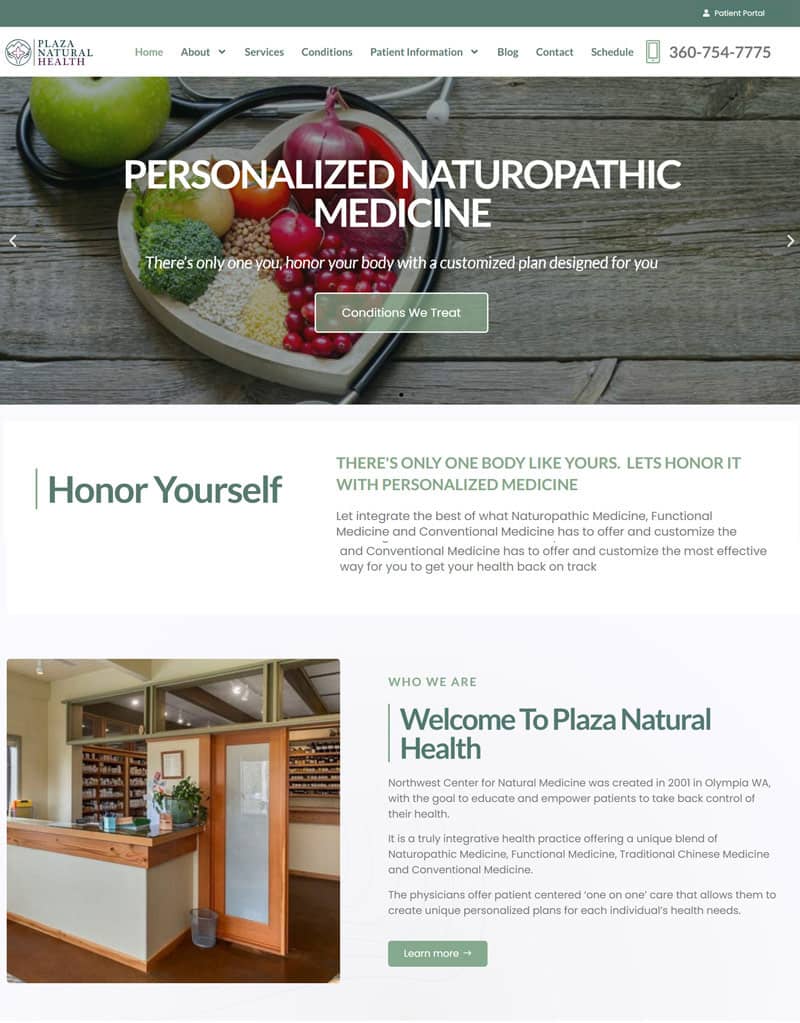
For Plaza Natural Health, we crafted a website that perfectly blends the clinic’s holistic approach with modern web design.
Why It Works:
– Clean, user-friendly design
– Clear calls to action
– Great use of typography
– Organic color palette
– Beautiful high quality images
Link: Plaza Natural Health
Burton Medical Clinic

For Burton Medical Center, we designed a fresh, modern website that reflects their commitment to cutting-edge healthcare. The new site features an intuitive layout, engaging visuals, and easy-to-access information, perfectly capturing the center’s dedication to patient-centered care and medical excellence.
Why It Works:
– Clean, user-friendly design
– Clear calls to action
– Easy to navigate
Link: BurtonMedicalCenter.com
Premier Pain & Spine Center
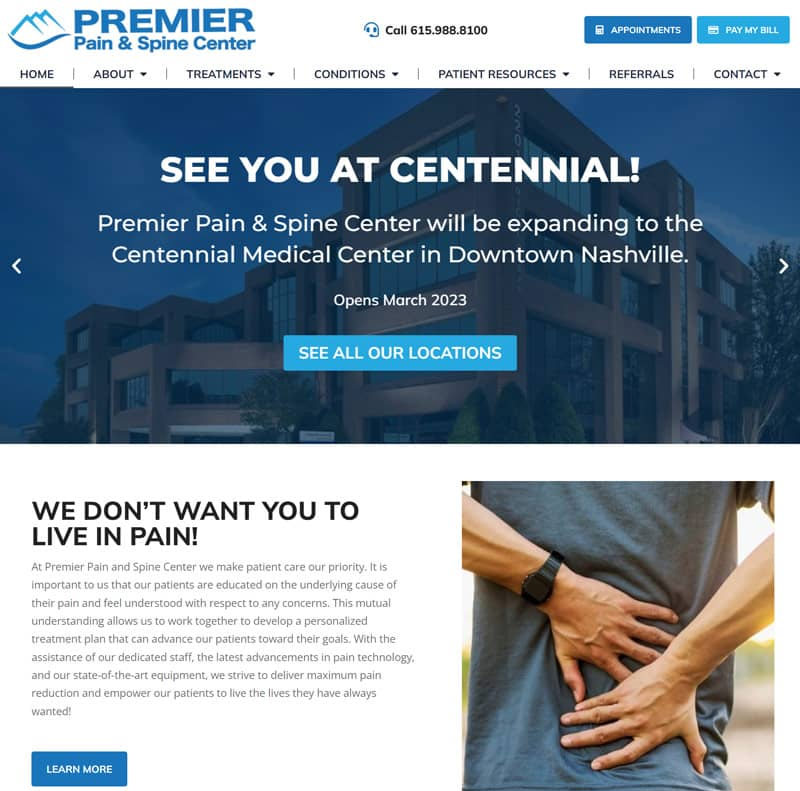
For Pain & Spine Center, we created a clean, user-friendly site that effectively communicates their advanced pain management services while providing easy navigation for patients seeking relief and information.
Why It Works:
– Clean, user-friendly design
– Clear calls to action
– Patient focused
– Beautiful high quality images
Link: Premierpsc.com
Maven Clinic
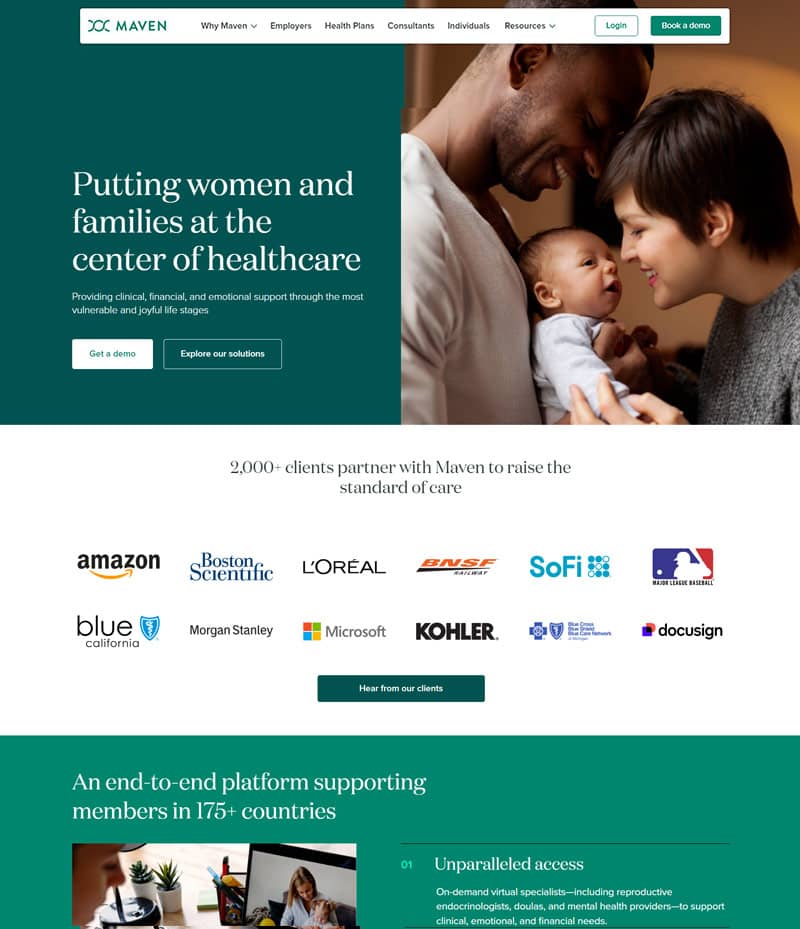
Maven clinic guides members on the quickest, safest, and most affordable path to bringing home a healthy baby. This design approach effectively communicates Maven Clinic’s professional, client-focused, and innovative approach to women’s and family healthcare.
Why It Works:
– Clean design. The site utilizes a well-organized, spacious layout.
– Clear calls to action
– Brand-centric color scheme
– High-quality images or graphics
– Prominent CTAs like “Get a demo” and “Explore our solutions”.
– Great use of social proof using stats
Link: MavenClinic.com
Conclusion
Designing an effective, patient-friendly website for your medical clinic is a crucial for the growth of your healthcare practice. By designing for mobile devices, optimizing for local SEO, creating engaging content, and focusing on user experience and conversion optimization, you can establish a strong online presence that attracts and retains loyal patients.
Remember, building and maintaining a successful medical clinic website is an ongoing process. Continuously monitor your site’s performance, gather user feedback, and make data-driven improvements to ensure your digital presence remains relevant, effective, and aligned with the evolving needs of your patients.
By following the strategies and best practices outlined in this comprehensive guide, you’ll be well on your way to designing a medical clinic website that not only looks great but also delivers a seamless, trust-building experience for your patients. Embrace this opportunity to showcase your practice’s expertise, compassion, and commitment to exceptional healthcare – and watch your online reputation and patient base thrive as a result.
